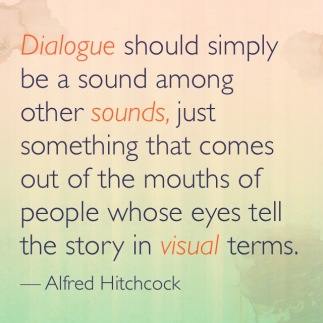I just completed a historical short story titled “The Dueling Politicians.” It’s based on the George Canning and Robert Stewart duel of 1809. For this story, my focus was on dialogue. My aim was to use character conversations in order to serve the story in more ways than just characters talking. I used it as a tool to push the plot forward, to provide information and exposition, to develop my characters, to add tension as well as humor, and to show the absurdity of these two politicians agreeing to a duel.
After reading about the importance of dialogue in short stories and novels, I’ve compiled notes on how dialogue can best serve a story.
Pushing the Plot Forward
The events that occur in a story don’t always have to be embedded solely in the narrative. Dialogue can drive the plot by showing the story’s conflict, throwing obstacles at the protagonist, and providing resolutions to the stumbling blocks.
Adding to Tension
Dialogue can be used to contribute to the stories tension. For instance, you can use it to show two characters disagreeing.
Providing Information
You can give readers information within the dialogue. But care should be taken as to not cram too much backstory or exposition in there. If there’s a lot of exposition, it would serve the story better to write it in narrative form. By doing so, you would also be making your characters more believable, because nobody gives information overload during a conversation unless they’re giving a speech or just can’t shut up.
Diction & Syntax: Essential Elements of Dialogue
Diction is word choice. In the case of dialogue, it’s the words a character uses in conversation as a way to convey their feelings, views, beliefs, et cetera.
Syntax is sentence structure. When a character is speaking in dialogue, the way they form their sentences can lend to character development. Do they speak in clear and concise sentences? Do they speak in compound or complex sentences?
Character Attributes that Affect Diction & Syntax
- Age
- Gender
- Ethnicity & culture
- Nationality & region
- Social class
- Education
- Occupation
The Best Dialogue Advice
In his book Master Class in Fiction Writing, Adam Sexton uses the dialogue in Raymond Carver’s “What We Talk About When We Talk About Love” as an example of dialogue serving the story in more ways than characters having a conversation. Sexton says that masterful dialogue contains “repetition, interruption, unfinished sentences, slips of the tongue, errors in fact, characters correcting themselves and even taking back what they said (alas, too late!), jargon and cliché, jokes, characters talking past each other, significant things left unsaid, and gestures—each in small doses…”

I’ll be coming back here for more lessons! Thanks.
LikeLiked by 1 person
You’re welcome! Glad it’s helpful.
LikeLike